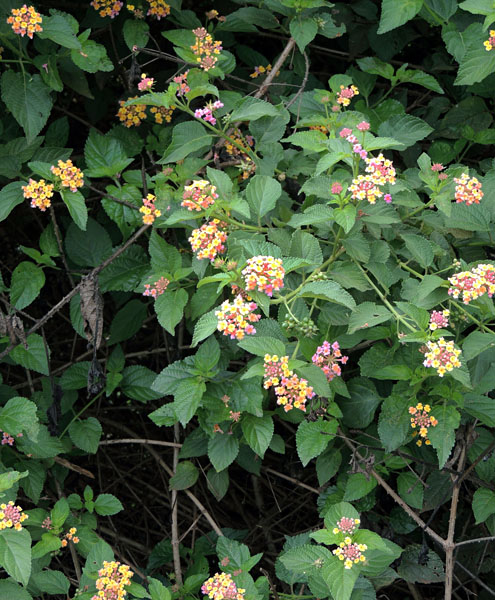Distribution and habitat
L. camara is naturalised in many countries in the Asia-Pacific region, Australia, New Zealand, Central and South America, West Indies and Africa.
Flowering and fruiting habits
It is a short vigorous shrub growing up to 2-4 meters in height. Leaves are ovate, 2-10cm long, 2-6cm wide, alternate, bright green, rough, hairy. The stems in cultivated species is non-thorny and in weedy varieties, with prickles. Lantana can climb to 15 m with support. Flower heads contain 20-40 flowers, usually 2.5 cm across, colours vary between white, orange, pink purple and red. Fruit is greenish blue-black, 5-7mm in diameter, shiny with 2 nutlets.
Uses other than pesticidal
Medicinal – Herbal medicines with antimicrobial, fungicidal, insecticidal and nematicidal properties.
Fuel- firewood for cooking.
Food for birds – Many birds including endangered ones feed on lantana thickets. Butterflies and moths also feed on it.
Ornamental- It is popular as ornamental plants in pots or as hedges rendering favourable trade.
Propagation and cultivation
Highly invasive and damaging to local habitats; not to be cultivated or propagated. Simply collect from abundant existing sources.
Seed collection & Storage
Highly invasive and damaging to local habitats; not to be cultivated or propagated.
Parts used
Leaves, flowers
Preparation
Dry and grind
Often layered whole plants in storage, occasional stirring to release volatile compounds
Uses
Can be used both pre and post-harvest.
Target organisms
Against broad range of insects
Mosquito and fly repellent
Post-harvest beetles

